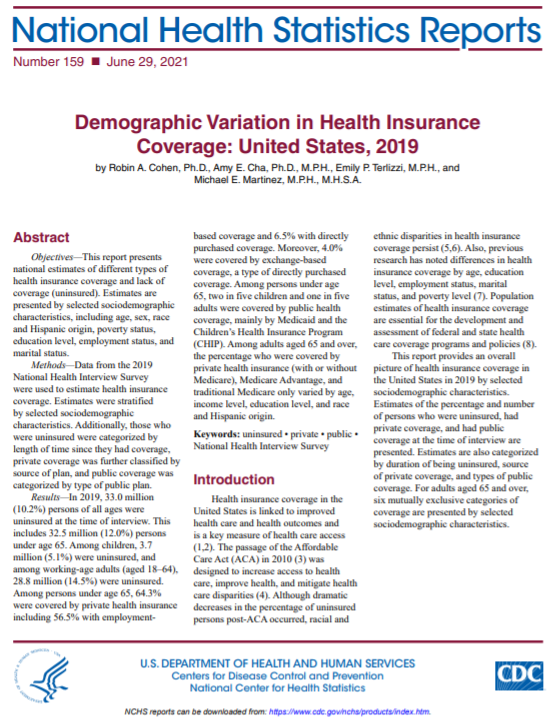Demographic Variation in Health Insurance Coverage: United States, 2019
Posted on byNew NCHS report presents national estimates of different types of health insurance coverage and lack of coverage (uninsured). Estimates are presented by selected sociodemographic characteristics, including age, sex, race and Hispanic origin, poverty status, education level, employment status, and marital status.

Findings:
- In 2019, 33.0 million (10.2%) persons of all ages were uninsured at the time of interview. This includes 32.5 million (12.0%) persons under age 65.
- Among children, 3.7 million (5.1%) were uninsured, and among working-age adults (aged 18–64), 28.8 million (14.5%) were uninsured.
- Among persons under age 65, 64.3% were covered by private health insurance including 56.5% with employment-based coverage and 6.5% with directly purchased coverage. Moreover, 4.0% were covered by exchange-based coverage, a type of directly purchased coverage.
- Among persons under age 65, two in five children and one in five adults were covered by public health coverage, mainly by Medicaid and the Children’s Health Insurance Program (CHIP).
- Among adults aged 65 and over, the percentage who were covered by private health insurance (with or without Medicare), Medicare Advantage, and traditional Medicare only varied by age, income level, education level, and race and Hispanic origin.
Posted on by
Categories health insurance
Page last reviewed: June 29, 2021
Page last updated: June 29, 2021
Content source:
CDC, National Center for Health Statistics

